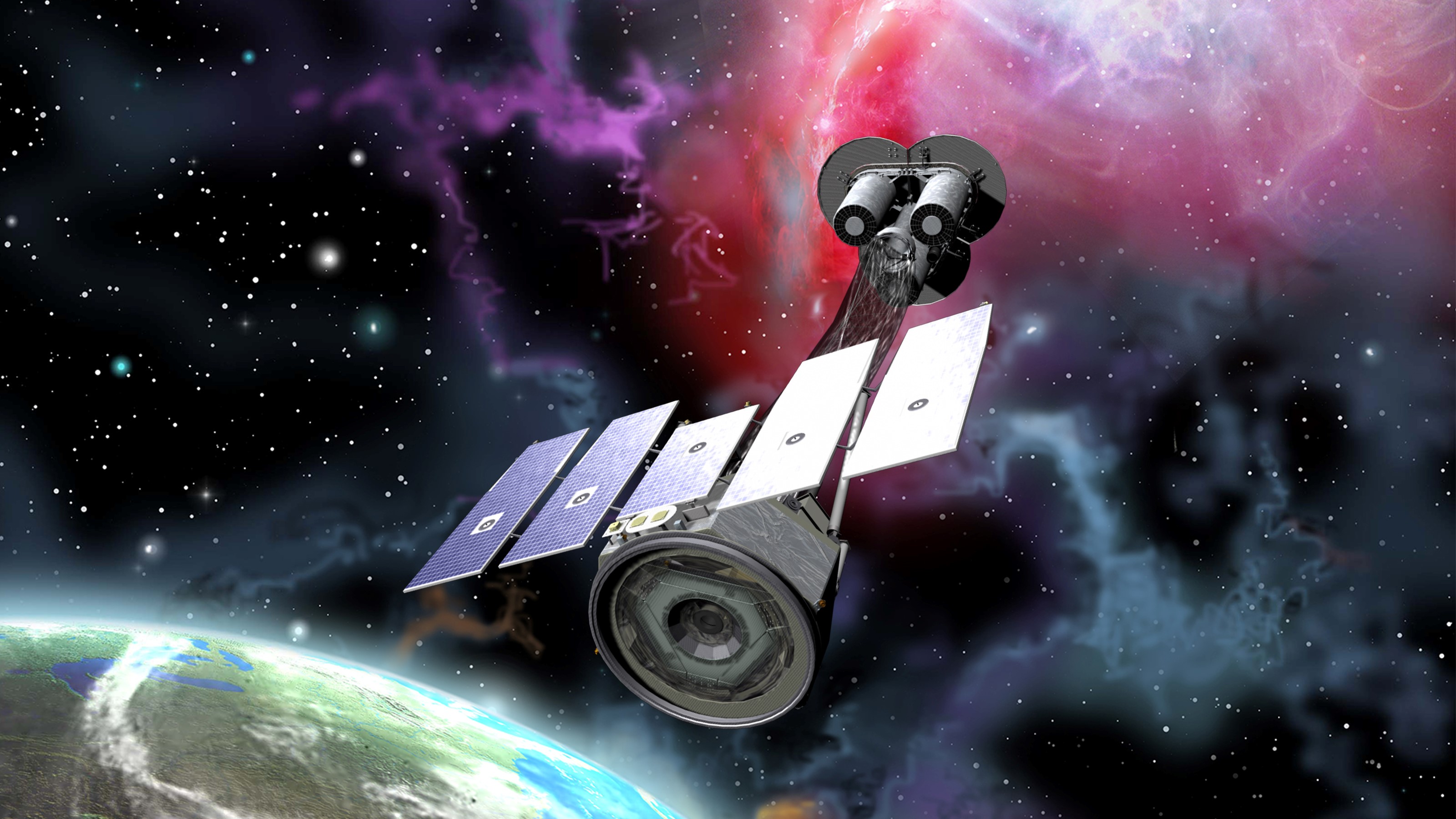
The Imaging X-ray Polarimetry Explorer (IXPE)
mission was launched on December 9, 2021 on a SpaceX Falcon 9 rocket from NASA's Kennedy Space Center in Florida into an equatorial orbit of 600 km altitude. The payload consists of three identical grazing incidence telescopes, each comprised of a mirror module assembly, developed at NASA/MSFC, with an X-ray-polarization-sensitive detector, provided by the Italian Space Agency (Agenzia Spaziale Italiana; ASI), at its focus. The payload sits atop a spacecraft bus provided by Ball Aerospace.
The observatory operates in pointing mode observing known targets for multiple (but not necessarily consecutive) orbits. Data are sent to a ground station in Malindi, Kenya, approximately 8 times per day and then are transmitted, via gateways in Italy and the US, to the mission operations center in Boulder, Colorado. From there, science data flows to the science operation center in Huntsville Alabama.
Mission Characteristics
 Lifetime
Lifetime : 9 Dec 2021– (operating)
 Energy Range
Energy Range : 2–8 keV
 Angular resolution:
Angular resolution: : 30 arcsec HPD (system)
 Special Features
Special Features : Provide simultaneous spectral, spatial and timing polarimetry measuraments
 Payload
Payload :
- The Mirror Module Assemblies (MMA) consist of three
grazing-incidence mirror modules of Wolter-I type each with 24
concentrically-nested mirror shells with diameters ranging from
162 to 272 mm. The MMAs are mounted on an extendable boom which
deployed on orbit to give the appropriate 4 m focal length. A
tip/tilt/rotate mechanism provides alignment adjustment.
Field-of-View (FoV) of a square, 12.9 arcmin on a side (detector limited);
Angular resolution (HEW) ~ 20-25 arcsec (MMA only);
Effective area per module at 167 cm2 at 2.3 keV and 197 cm2 at 4.5 keV.
- The Detector Units (DUs) are three Gas Pixel Detectors (GPDs)
each located at the focus of an x-ray mirror module. Each GPD
provides the position, energy, time and polarization information
for every absorbed event. The GPD images the photoelectron tracks
produced by the x-rays absorbed in a special fill gas and from its
initial emission direction the polarization of the source is
determined. The initial interaction point and the total charge in
the track provide the location and energy of the absorbed x-ray,
respectively.
Detector sensitive area 15 mm x 15 mm
Spatial resolution (FWHM) ≤ 123 µm (6.4 arcsec) @ 2 keV
Energy resolution (FWHM) 0.57 keV @ 2 keV (∝ √E)
 Science Goals
Science Goals:
- Enhance our understanding of the physical processes that produce
X-rays from and near compact objects such as neutron stars and black
holes.
- Explore the physics of gravity, energy, and electric and magnetic fields.
 Archive
Archive: The HEASARC hosts the IXPE archive.